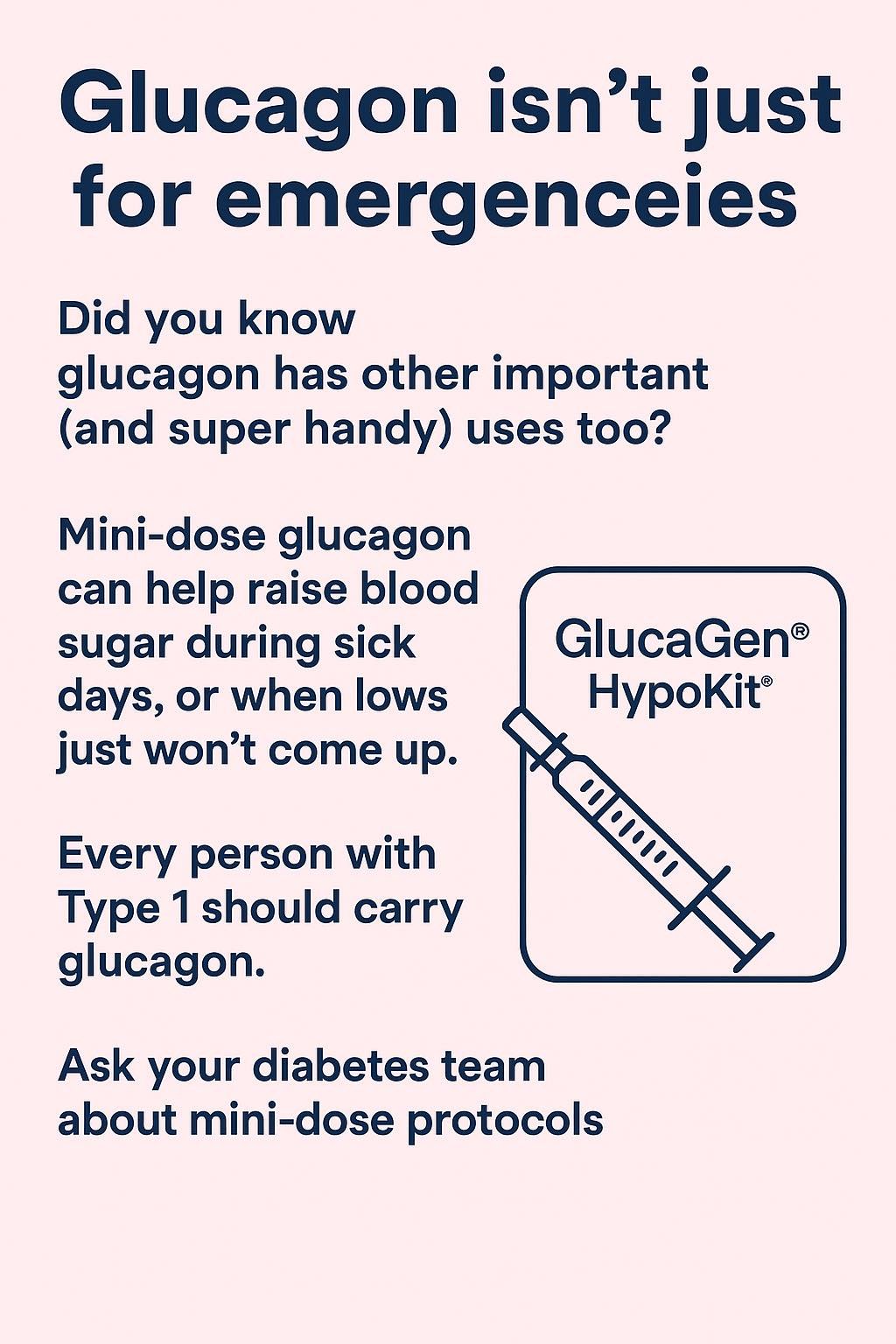Glucagon Isn’t Just for Emergencies: The Mini-Dose You Should Know About
💉 Meet the Mini-Dose Protocol Every T1D Family Should Know
We all know glucagon is used in emergencies — like when someone with Type 1 diabetes is unconscious or having a seizure from a severe hypo. It’s an essential part of the emergency kit.
But did you know glucagon has other life-saving uses, too?
🛌 Sick Days & Stubborn Lows
There are moments when food just won’t stay down. Or when no matter how much juice or jellybeans you give, your child’s blood sugar just won’t rise.
Enter mini-dose glucagon.
It’s a small, controlled dose of glucagon that helps raise blood sugar when:
Eating isn’t possible (vomiting, nausea, illness)
Persistent lows don’t respond to sugar
You want to avoid the ER
💬 What Every T1D Parent Should Know
Mini-dose glucagon is something I didn’t know about until we lived through a terrifying low that wouldn’t budge. It’s been a game-changer.
Every person with Type 1 should carry glucagon, not just for worst-case scenarios, but as a preventive tool.
✅ Ask your diabetes team about sick day protocols
✅ Learn when to use a mini-dose
✅ Keep it handy — always
🧠 Learn More
Here’s a great resource from The Royal Children’s Hospital Melbourne:
👉 Mini-Dose Glucagon for Sick Days – RCH Guidelines
And always speak with your diabetes team before trying any new treatment.
🛍️ Show Your Support
Want to raise awareness while supporting T1D families?
👉 Visit the More Than A Prick shop
Every sale helps spark conversation and fund future awareness tools.


